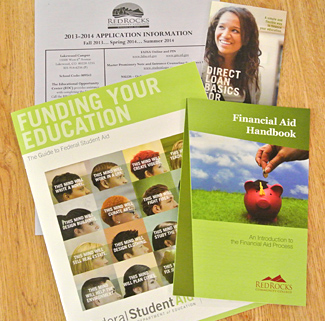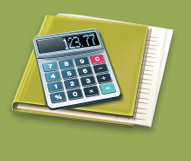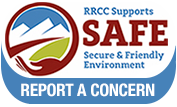Loan Repayment/Debt Management
Red Rocks Community College participates in the Federal Direct Student Loan program. We encourage students to make informed decisions when taking out a student loan. Only borrow the amount of funds you need to successfully complete your education. Students are legally obligated to repay a student loan once it is disbursed, even if they do not complete their program. We encourage you to fully read and understand the terms and conditions of each loan type before accepting a loan. Federal student loans are available to students after completing a Free Application for Federal Student Aid (FAFSA).
The Federal Direct Student Loan program allows students to:
- borrow directly from the federal government and have a single contact - the National Student Loan Database System (NSLDS)- for everything related to the repayment of your loans, even if you receive Federal Direct Loans at different schools.
- have online access to your Federal Direct Loan account information 24 hours a day, 7 days a week, at NSLDS online: https://studentaid.gov
- choose from several repayment plans that are designed to meet the needs of almost any borrower, including income-based repayment. You may also switch repayment plans at any time if your needs change.
Please note, if you are OFFERED a student loan at Red Rocks Community College, it does not mean you have received the loan. You must accept your offered loans online through The Rock student portal and complete both Entrance Counseling and a Master Promissory Note at https://studentaid.gov. You must be enrolled in at least 6 credit hours that are required by your declared major, and you must meet general aid eligibility requirements.
You are likely eligible for an additional amount of unsubsidized (interest-bearing) student loans, which are not listed on your initial financial aid offer. If you need to increase the amount of loans you borrow, submit a Loan Adjustment Form to make this request. Be sure to first accept the initial loan offered to you through The Rock student portal before completing this form. Dependent students are eligible for an increase up to $2000 for the year. Independent students are eligible for up to $6000 for the year, as long as you haven't reached your lifetime borrowing limit.
The Direct Loan Program offers the following types of loans:
Subsidized: for students with demonstrated financial need, as determined by your FAFSA. Interest is paid by the U.S. Department of Education while you are enrolled in school at least half-time (6 or more credits), and during deferment periods. Repayment of subsidized loans have a 6 month grace period which begins once your enrollment falls below 6 credits. During a student's in-school status, and in any deferment period, payments on the loan principle are not required and interest will not accrue. Loan origination fees apply. Your servicer will contact you when your first payment is due. You are responsible for payments even if you do not receive a bill from your federal servicer.
Unsubsidized: not based on financial need; interest is charged from the date of disbursement and during all periods, even while you are in school and during deferment periods. If you can, we recommend you make the small payments on the accruing interest while you are in school, though payments are not required until after your one-time grace period as explained above.
Direct PLUS: There are 2 types of PLUS loans: Graduate PLUS for students who are in a graduate-level program, and Parent PLUS, an unsubsidized loan for the parents of dependent students. PLUS loans help pay for educational expenses up to the cost of attendance, minus all other financial assistance. Interest is charged during all periods. PLUS loans are typically a better option than private student loans because PLUS loan borrowing terms are regulated by the U.S. Department of Education, interest rates are often lower than private loans, and borrowers may qualify for beneficial repayment options. If a Parent PLUS loan application is denied, a dependent student may become eligible to borrow up to the unsubsidized loan eligibility for an independent student; this does not apply for the Graduate PLUS. This additional Stafford loan cannot exceed the student's cost of attendance minus all other aid (including other loans).
Federal Direct Student Loan Limits
The maximum amount you can borrow each year in Direct Subsidized and Unsubsidized Loans depends on your grade level and on whether you are a dependent or an independent student. The following table shows the maximum amount of money you may borrow each academic year in Direct Subsidized and Unsubsidized Loans. If you need to borrow more than you were initially offered, you may submit a Loan Adjustment Request to the Financial Aid Office.
|
|
Dependent student |
Independent student |
|
1st-year undergraduate |
$5,500 (maximum $3,500 in subsidized) |
$9,500 (maximum $3,500 in subsidized) |
|
2nd-year undergraduate |
$6,500 (maximum $4,500 in subsidized) |
$10,500 (maximum $4,500 in subsidized) |
|
3rd-year undergraduate |
$7,500 (maximum $5,500 in subsidized) |
$12,500 (maximum $5,500 in subsidized) |
|
4th-year undergraduate |
$7,500 (maximum $5,500 in subsidized) |
$12,500 (maximum $5,500 in subsidized) |
|
graduate masters program |
N/A |
$20,500 (unsubsidized only) |
The actual loan amount you are eligible to receive for an academic year is determined by your school and may be less than the maximum annual amounts shown in the chart above.
As of the 2020-2021 academic year, the average student loan indebtedness of graduated RRCC student borrowers was approximately $12,186, with the fixed interest rate of 3.73%. The monthly payment for this amount borrowed would be $121.82 under a 10-year standard repayment. A total of $14,618.40 would be paid in 120 payments. The daily interest amount would be $1.25, with $2,432.40 being the total student loan interest. Calculator Source: https://navient.wealthmsi.com/loanrepay.php
Resources for Students
- National Student Loan Data System (NSLDS)
The National Student Loan Data System (NSLDS) is the U.S. Department of Education’s central database for student financial aid records. Federal loans disbursed to students or parents will be submitted to NSLDS and will be accessible by guaranty agencies, lenders, and institutions determined to be authorized users of the data system. Student and parent borrowers can track and manage their federal student loans and grants online at studentaid.gov. This secured site displays information on loans and grants, including amounts, outstanding balances, and status. Student and parent borrowers can also find contact information for their loan servicer.
- To learn about repayment, click here. You may also complete the loan exit counseling at any time, even if you plan to borrow additional loans. To access the Federal Student Aid Direct Loan Exit Counseling Guide, click here.
- Navigate the student loan repayment process with confidence. Learn about your repayment options using Loan Simulator. This tool helps you calculate your student loan payments, and choose a repayment option that best fits your budget:
https://studentaid.gov/loan-simulator/
- Start building a better financial future today. Create a monthly budget, and complete online topics relevant to your life. Measure your financial health, and get personal recommendations. Sign up to access ECMC Learning:
https://www.ecmclearning.org/rrcc
- Always contact your federal loan servicer first. Sometimes you just need more help. The Institute of Student Loan Advisors, TISLA was founded to ensure that all student loan borrowers have access to free, neutral, and clear student loan advice, as well as dispute resolution assistance, without being charged a fee:
https://freestudentloanadvice.org/
- On-campus help: Call (303) 914-6021, or visit Tom Miller at the Arvada campus for a Student Loan Checkup. He can help you find a repayment strategy to keep your payments affordable, and help you stay healthy in repayment.
- For additional assistance with your Direct Loans, you can manage your Direct Loans online by logging into The Rock or by phone at 1-800-848-0979.
- The Student Loan Ombudsperson’s Office is a resource for borrowers who are having difficulties resolving student loan problems. Borrowers should first attempt to resolve complaints by contacting the school, company, loan servicing agency, or office involved. When all reasonable efforts to resolve the problem have been unsuccessful, you should contact the Colorado Attorney General's Office Student Loan Ombudsperson by email at studentloans@coag.gov, by filing a copmlaint at www.coag.gov/studentloans, or by calling (720) 508-MySL (6975).
- Students who have defaulted on their student loan payments must resolve their defaulted loan status before receiving any financial aid at any school. Use your FSA ID to log into NSLDS and view the status of your student loans as well as the contact information for your loan servicer. Rehabilitating a defaulted student loan can take up to 9 months. On April 6th, 2022 the United States Department of Education announced the Fresh Start Initiative. Borrowers with federal student loans in default will be able to enter current repayment status and have federal student aid benefits and protections restored. Contact DMCS (Debt Management and Collection Systems) at 1 (800) 621-3115, or at myeddebt.ed.gov. This is a limited opportunity and will end one year from the end of the current payment pause.
Interest vs. Principal
Interest
The interest on a loan is a fee charged daily in exchange for the use of federal funds. When repaying your student loans, you must repay the charged interest in addition to repaying the amount you borrowed. Interest is usually calculated as a percentage of the outstanding principal balance of the loan. Interest rates are fixed for the life of the loan.
Principal
The principal loan balance is the amount of money borrowed or remaining unpaid on a loan. Interest is charged as a percentage of the principal. Origination fees are normally deducted from the amount before disbursement.
The Loan Fee for Federal Direct Subsidized and Unsubsidized Loans borrowed on or after October 1, 2020 and before October 1, 2024 is 1.057%.
- Direct Subsidized and Direct Unsubsidized Loans = 1.057%
- Direct Parent/Graduate PLUS Loans (for both parent borrowers and graduate and professional student borrowers) = 4.228%
For example, the fee on a $5,500 undergraduate Stafford loan will be $58.16. The fee on a $10,000 PLUS Loan will be $423.60.
Loan Debt Management
Loan Repayment Information and Resources
Click here to access the Student Loan Repayment Toolkit.
It's never too early to explore your loan repayment options. This Loan Simulator can help!
Loan Simulator is a new tool to help you make decisions about your student loans. Use it to find a repayment plan that meets your budget, or to plan for future borrowing. This new tool from the Department of Education will guide you through a series of questions based on your intended goals:
- Find out how making extra payments will pay your loan faster
- Decide whether you want to temporarily stop payments or lower your monthly payment
- Use Loan Simulator as a planning tool to find out what happens when you borrow more money to pay for future education expenses
Federal regulations require RRCC to conduct “exit loan counseling” once your enrollment falls below half-time (six credit hours). Your loan servicer must also be notified, and the six month “Grace Period” begins: FSA Direct Loan Exit Counseling Guide (pdf).
Borrower Grace Periods
After you graduate, leave school, or drop below half-time enrollment, you have a period of time before you have to begin repayment. This “grace period” will be six months for Direct Federal Student Loans.
PLUS Borrowers—The repayment period for all PLUS loans begins on the date the loan is fully disbursed, and the first payment is due within 60 days of the final disbursement. However, a PLUS borrower can defer repayment while the student is enrolled at least half-time, and, for PLUS loans first disbursed on or after July 1, 2008, for an additional six months after the student is no longer enrolled at least half-time. Interest that accrues during these periods will be capitalized if not paid by the borrower during the deferment period.
Make Your Payments on Time
Your loan servicer will provide information about repayment and will notify you of the date loan repayment begins. It is very important that you make your full loan payment on time either monthly (which is usually when you’ll pay) or according to your repayment schedule. If you don’t, you could end up in default, which has serious consequences. (See Default below.) Student loans are real loans—just as real as car loans or mortgages. You have to pay back your student loans.
Get Your Loan Information
The U.S. Department of Educations’ National Student Loan Data System (NSLDS) provides information on your federal loans, including loan types, disbursed amounts, outstanding principal and interest, and the total amount of all your loans. To access NSLDS, go to studentaid.gov.
If you are not sure who your loan servicer is, you can look it up at studentaid.gov/manage-loans/repayment/servicers or call the Federal Student Aid Information Center at 1-800-4-FED-AID (1-800-433-3243; TTY 1-800-730-8913).
Repayment Plans
You have a choice of several repayment plans that are designed to meet the different needs of individual borrowers. The amount you pay and the length of time to repay your loans will vary depending upon the repayment plan you choose. Visit studentaid.gov for more information about the various repayment plans and to calculate your estimated repayment amount under each of the different plans.
Loan Interest Rates
The following table provides current interest rates for Direct Loans (Effective 07/01/2023)
|
Type of Direct Loan: |
Fixed Interest rates: |
|
|
Subsidized Direct Loan |
Undergraduate Students |
5.5% |
|
Unsubsidized Direct Loan |
Undergraduate Students |
5.5% |
|
Unsubsidized Graduate Direct Loan |
Graduate Students |
7.05% |
|
Parent PLUS and Graduate PLUS Direct Loan |
Parent and Graduate |
8.05% |
Why Does the Amount of Interest I Pay Vary from Month to Month?
Interest accrues on a daily basis on your loans. Factors such as the number of days between your last payment, the interest rate, and the amount of your loan balance determine the amount of interest that accrues each month.
To find out your daily interest, use this formula:
(interest rate) x (current principal balance) ÷ (number of days in the year) = daily interest
Given the example above: (.0499) x ($50,000) ÷ (365) = $6.83, you are charged $6.83 per day in interest.
Calculator Source: https://navient.wealthmsi.com/loanrepay.php
Electronic Payment
In some cases, you might be able to reduce the interest you are charged by enrolling in direct debit through your loan servicer website. Direct debit is the most convenient way to make your student loan payments—on time, every month. Direct debit is a free service. You may qualify for a 0.25% interest rate reduction when actively making payments on Direct Debit. Contact your student loan servicer for additional information.
Difficulty Making Payments
If you’re having trouble making payments on your loans, remember that if something causes you to not be able to afford your payments, it is important for you to contact your loan servicer or Tom Miller at RRCC, (303) 914-6021, right away. Especially with federal loans, there's almost always something your loan holder can do to provide relief and help you avoid late fees and credit hits.
- Changing repayment plans.
- Requesting a deferment—If you meet certain requirements, a deferment allows you to temporarily stop making payments on your loan. Interest continues to accrue during deferment periods.
- Requesting forbearance—In limited circumstances, if you don’t meet the eligibility requirements for a deferment but are temporarily unable to make your loan payments, forbearance would allow you to temporarily stop making payments on your loan, temporarily make smaller payments, or extend the time for making payments. Interest continues to accrue during periods of forbearance.
- Consolidation—Allows you to combine your federal student loans into a single loan. Visit the Loan Consolidation page at studentaid.gov to see whether consolidation is right for you.
If you stop making payments and do not get a deferment or forbearance, your loan could go into default, which has serious consequences (see below).
Default
If you default on a student loan repayment, it means you failed to make payments on your student loan according to the terms of your promissory note, the binding legal document you signed at the time you took out your loan. In other words, you failed to make your loan payments as scheduled. Your school, the financial institution that administered your loan, your loan guarantor, and the federal government all can take action to recover the money you owe.
Get Out of Default With Fresh Start
Fresh Start is a one-time temporary program from the U.S. Department of Education (ED) that offers special benefits for borrowers with defaulted federal student loans. Fresh Start automatically gives you some benefits, including restoring access to federal student aid (loans and grants). However, you must take action to claim the full benefits of Fresh Start and get out of default. Sign up for Fresh Start for free using one of the methods below.
Act Now to Get Out of Default
To use Fresh Start to get out of default, contact your loan holder, or Tom Miller at RRCC. If your loans are held by ED, you can contact us using one of the three methods below. If your loans are held by a guaranty agency, you’ll need to call that agency. If you don’t know who holds your loans, call 1-800-621-3115 (TTY 1-877-825-9923).
Ways to Contact ED About Fresh Start that can take less than 10 minutes:
Online—Go to myeddebt.ed.gov and log in to your account. This is the easiest option if you know your login information.
Phone—Call 1-800-621-3115
Here are some consequences of default:
- A damaged credit rating
- Court action or litigation
- Garnishment of state and federal tax refunds and state lottery winnings
- Wage garnishment and attachment of property
- Loss of additional student aid eligibility
- Loss of deferment and monthly repayment options
- Assessment of collection costs
- Possible effect on professional licensing
For more information, and to learn what actions to take if you default on your loan, contact the Department of Education’s Default Resolution Group at 1-800-621-3115.
RRCC's official cohort default rate for FY19 is 1.7%. The national rate of student borrowers defaulting on their student loan payments during FY19 is 3.7%. RRCC has the lowest rate of student loan default in the Colorado Community College System (CCCS). For the 2021-2022 aid year, 1,161 RRCC students borrowed Federal Direct Subsidized/Unsubsidized loans, for a total of $5,131,060. The average amount borrowed during 2021-2022 was $4,419.52.











